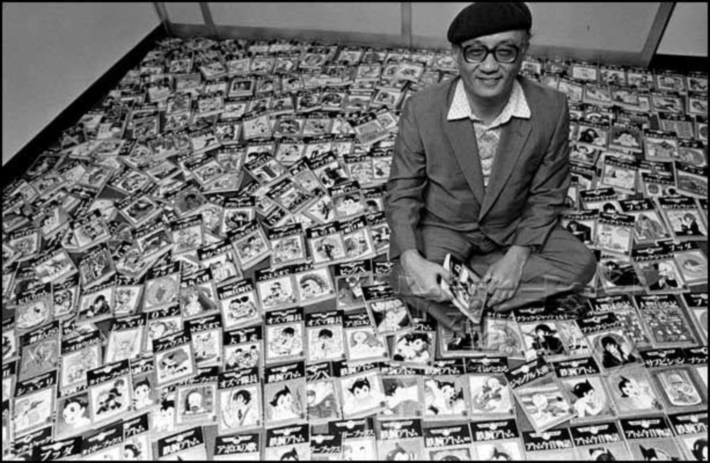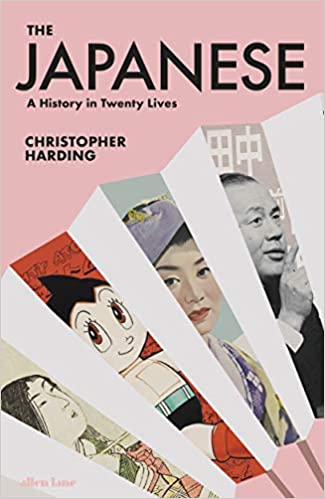Books: The Japanese
November 8, 2020 · 0 comments
By Shelley Pallis.

I am, above all, envious of Christopher Harding for coming with the idea for his new book in the first place – writers struggle to find ways to make history palatable and digestible for the general reader, and the very idea for The Japanese: A History in Twenty Lives, is deceptively simple.
Beginning with Queen Himiko, the first verifiable name to turn up in Japanese history, he uses 20 figures as paragons of their eras, rushing through Japan’s tumultuous history. There are echoes, here, of the documentary fast-forward of Satoshi Kon’s Millennium Actress, as Harding charges pell-mell through the centuries, pausing every few minutes for a moment of delightful, insightful slow-motion.
Many of his earlier figures are aristocrats and nobility, including the court diarist Murasaki Shikibu, a stack of Emperors, and the legendary reformer Prince Shotoku. Veering away from the endless catalogue of male war-heroes of the samurai era, he chooses to focus instead on Masako Hojo, the “nun” shogun, as well as the playwright Zeami. For anyone with a passing interest in Japanese history, but no idea where to start, Harding offers quirky but illuminating snapshots of moments in time – the great voyage to Europe of the Christian samurai Tsunenaga Hasekura, or the life between worlds of Ine Kusumoto, “a woman with a strong claim to be Japan’s first female doctor trained in Western medicine.”

I hesitate to call it “dip-into” reading, as Harding has an over-arching theme. There are call-backs, in his later chapters, to some of the revelations of earlier pages. You could just jump right in at wherever in the book looks most interesting, but if you did, you would lose some of the educational value of having reached a page in linear time.
When it comes to the post-war era, Harding picks some interesting icons, including Hibari Misora, the teen songstress who came to symbolise a struggle for lost innocence, and with the release of her “Apple Folk Song” on the day that the American Occupation forces departed, the regaining of lost freedoms.
Harding is blessed with an eye for tiny detail – when he gets to the manga creator Osamu Tezuka, he begins with an intimate memory of 1960s bath-times, as children all over Japan demand their parents sculpt their hair into imitation spikes to match those of his iconic Astro Boy. His account of Tezuka’s youth zooms in, with extreme close-ups, to the careful gramophone-faffery required to keep sound in sync with a home movie projector, and the befuddlement of a little boy who mistakes the curtains at his grandfather’s funeral for the stage at a promised operetta performance.
He’s a little shaky on animation itself, making the common error of assuming that “full animation” means 24 new images per second, whereas even for Disney it was more likely to mean just 12 (animation “on twos”). Astro Boy, of course, was actually shot “on threes” (at eight new images per second, or even less). Harding also repeats the common fallacy that Astro Boy was sold to the NBC network in America – it was sold to NBC Enterprises, a company with a name designed to fool people into thinking that it was indeed the hallowed nationwide broadcaster, and not merely a subsidiary that would place shows in local syndication. Nor, for that matter, did Fred Ladd give the US Astro Boy theme song “less martial” lyrics than the original – the Astro Boy theme didn’t have any lyrics until Tezuka heard the Ladd version and decided to imitate it. Harding also wanders into a modern minefield by describing Princess Knight as a “shojo” manga – it was, indeed, written for a female readership, but by using the Japanese term, Harding gives the impression that Princess Knight was the first shojo manga – as in the genre, not the readership – a contention that gives some modern academics the vapours.
But I don’t want to get bogged down with nitpickery over the Tezuka story – not only is it an unfair appreciation of Harding’s overall achievement, and in the compliment of making Tezuka 5% of the story of all Japan, it is also something of a mug’s game, since Tezuka himself was such an unreliable narrator of his own story that he was often an active participant in the false stories told about him.
Any listicle-type book is an exercise in provocation, inviting readers to come up with their own wish-lists of figures. You could easily pick 20 entirely different people to include, which makes Harding’s decisions an act of creative management. For his final two subjects, covering the last 50 years, he chooses Japan’s 1972-74 prime minister, Kakuei Tanaka and the empress consort Masako Owada. It’s she who has the most telling life – a diplomat’s daughter who encapsulates the huge change in expectations and opportunities for Japanese women in recent decades. Growing up in Russia and the United States, fluent in English and French, Owada was plucked from an ambassadorial career track after a stilted conversation with Crown Prince Naruhito at a state function. Styled and primped into an imperial bride, her oh-so-modern life was suddenly put on hold, returned in many ways to the cloistered, ceremonial performance of divine power of the ancient Queen Himiko. And like Himiko, the imperial consort is both monarch and prisoner, trapped in between suffocating court protocols and invasive media attention.
Harding ends with her New Year’s poem of 2020, a message for all:
“The power of youth / brings hope / to those who strive / To rise up from the calamity they suffer.”
Christopher Harding’s The Japanese: A History in Twenty Lives is published by Allen Lane.
Leave a Reply